Fans of Hatsune Miku who picked up one of Sony’s Miku-themed Xperia A smartphones will no doubt be delighted to hear that they now have the chance to make their mobile that little bit more digital diva. Produced by the creators of genius accessories such as the egg-on-toast cover and ramen bowl stand, Hamee, and sold via Japanese online accessory store Strapya, this onion-equipped smartphone case is sure to make your feelings about the Vocaloid Queen plain for all to see.
weird (Page 163)
Hamee has done it again! First, they managed to create an egg on toast smartphone case that’s so realistic you might accidentally take a bite. Now the quirky company has just released a bowl of ramen that will hold your iPhone for you.
Just when you thought it was safe to delve into the back of your boyfriend’s closet, the hizamakura is back!
Literally translated as “lap pillow,” hizamakura — cushions designed to look like the tender thighs of a woman – were a huge hit about 10 years ago and were splashed all over Western websites and magazines alongside phrases such as “weird Japan”, with many articles asking whether the country’s men were really so lacking in social skills that they were forced to buy such products. In truth, many were purchased as gag items as the trend grew, but as their popularity faded hizamakura soon became associated more with otaku nerd culture and became a much less common sight.
Reports suggest, however, that a new line of lap pillows going on sale at Tokyo’s Narita Airport are bringing the trend back and they’re selling better than ever.
Possibly taking a fashion cue from The Joker, women in South Korea are undergoing a bizarre plastic surgery procedure to enhance their smile. Dubbed “mouth corners lift” or “smile lipt” (a made-up word incorporating the words “lip” and “lift”), the surgery involves cutting the sides of the mouth to create the illusion of a smile.
Dating in Japan is similar to dating elsewhere, in that men are usually clueless about what women really want to do. Strapped for ideas, you might invite your girlfriend to come by your place, you know, just to hang out. Maybe you’ll cook dinner together, which if you’re anything like me, means that after burning your third chicken breast, she’ll forcibly take the frying pan away and suggest you put out the napkins, only to be puzzled later at how you managed to burn those, too.
Over the course of the meal, your girlfriend may mention that next time, she’d really like to go on a dam date instead. Take heart, though. She’s not upset, she’s being helpful.
As much as politicians try to prevent them and doctors disapprove of them, kirakira Japanese names, the kinds that hold double meanings or are just plain hard to read, are apparently still on the rise. A recent survey of kids in their teens and early twenties showed that now more than 40 percent of students know someone at their school with an obscure reading for their name.
Reading name kanji is already a difficult task. A single symbol can have up to a dozen different readings, and while some are more common than others, there’s always a bit of guesswork that goes into deciphering the pronunciation of someone’s name. It’s bad enough when two people have names with the same symbols and entirely different readings. Imagine the frustration that teachers must face when a new student’s name is pronounced in a way that doesn’t even sound Japanese!
There’s a difference between naming your kid something “international” and making your kid’s name a nuisance. See if you can understand the reason behind the reading of some of these kirakira names.
Among the many colorful expressions in Japanese you’ll find kuwazu girai, which is used to describe a knee-jerk dislike to something unfamiliar before you’ve given it a fair shot. Kuwazu girai literally translates to “hating it without having eaten it,” and it was exactly the problem restaurateur Himi Okajima was having at his eatery, called Hakata Tonton, in New York’s Manhattan.
Okajima is a native of Fukuoka in southern Japan, and orders weren’t exactly pouring in from American customers for two of his hometown’s favorite dishes that were on the menu: pigs’ feet and cod roe.
Avid readers of RocketNews24 might have noticed our series of articles earlier this month about Japan’s latest fad, freezer diving. This year’s summer heat wave has inspired a whole string of idiotic people to climb into convenience store freezers as a way to beat the blazing weather.
Now, whether it’s a result of Japanese media hype or individual inspiration, pictures of people inside fridges and freezers are popping up all over the world. The latest country to join in the craze was China.
From the makers of Goal!Goal!Goal! Bank and a wind-up shrimp toy comes a sea anemone for the home. Ieginchaku, a delightful play on words utilizing ie, the Japanese word for “house” and isoginchaku, the word for “sea anemone,” is a little toy/conversation piece that not only resembles those koosh balls you used to chuck at your sister, it moves on its own and comes with little plastic fish! Need a little more convincing before rushing out to buy this product? Take a look at the promotional video; the Ieginchaku really has to be seen in action to be fully appreciated.
Observed by those who don’t play them, video games may all seem a little bit peculiar. Mushroom-eating plumbers stomping hammer-throwing turtles, ultra-violent military shooters whose protagonists bound across battlefields shouldering rocket launchers while hurling grenades and taking bullet after bullet to the chest, and of course the hordes of zombie titles that, like their lumbering stars, simply won’t die. For those accustomed to the rules of these digital worlds, though, this all makes perfect sense.
There are occasionally, however, a few titles that even the gaming elite would recoil from wearing an expression somewhere between “ermahgerd” and “turd sandwich”, and YouTube-based ZoominGames believes they’ve identified the cream of said crop. So let’s take a look at the channel’s “Top 5 Weird Games” one by one and see if they’re really they freaky affairs they’re made out to be. Oh, and did we mention that all five happen to have been made in Japan…?
Officially called, “Stunning Black and White Fortress,” this pair of burgers, one white and one black, is being sold for a limited time only at McDonald’s in Taiwan. The name alone made our reporter want to try this duo, but how would these unnaturally colored burgers taste?
It’s the dog days of summer and your poor little poochie is sprawled out on the hardwood floor, trying to suck up as much coolness as possible. She’s looking up at you with those pleading, puppy dog eyes, hoping for some sort of relief from the heat because you’re too cheap to turn on the air conditioner. Sure, humans have handheld fans, fancy cooling sprays, and delicious ice cream, but what does Fido get? If you’re in Japan and have enough extra cash, your dog could be chilling out this summer in its own personal air conditioner box.
Like many people who grew up in America, when I hear the word “Asahi,” the first thing I think of is beer. Of course, beer also happens to be the first thing I think of when I hear “breakfast,” but that’s a story for another time.
However, there’s also an Asashi Newspaper in Japan. And while the news outlet has no connection to the identically named brewer, that didn’t stop it from recently handing out the kind of parenting advice you’d normally expect from a dad who’s also a violent problem drinker, suggesting that parents “accidentally” smash their kids’ video game consoles in order to keep them focused on their studies.
Tea is the first beverage that comes to mind for most people when they think of Japan, followed closely by sake, beer, chu-hi, and a plethora of other alcoholic beverages for those who spent time at a Japanese university. There are plenty of coffee drinkers in the country too though, with Yuki Jirushi (“Snow Mark”) Coffee’s café au lait being a steady seller in supermarkets and convenience stores for 50 years.
With such a long history, however, the company thought the product’s image could use an updating, and they asked artists to submit their designs for a new mascot to be called Yukiko-tan (-tan being an even cuter version of the already cute Japanese name suffix –chan). Six finalists remain in the contest, and Yuki Jirushi recently held a promotional event to help the undecided pick a favorite by utilizing the tentpole that seemingly all major Japanese marketing campaigns are built around: cute girls.
After two weeks of voting, Funasshi, the official yuru-kyara (mascot) representing Funabashi City in Chiba Prefecture, has come out as the number one local mascot in all of Japan. Known for his amazing jumping power and jiggly, almost convulsive movements, Funasshi bounced his way into the hearts of the Japanese people. He was joined by six other bizarre mascots, including the snarling half melon, half bear character from Hokkaido and a chubby dolphin from Kagawa Prefecture, for the announcement of the election results on August 6.
The Kyoto Aquarium is offering a limited summer snack officially dubbed the “ayu salt-cooked hot dog.”
To the uninitiated, this probably sounds like a hot dog topped with some exotic, delicious spice called ayu, but adventurous expats will recognize ayu as a native Japanese fish species often served grilled whole on a stick.
Summer in Asia is hot. Like, really, really hot. Seeing mirages hot. Cooking whole English breakfasts on the sidewalk hot. But no matter how hellish the summer heat gets, we will never, ever, ever set foot in this Chinese lake.
The above is the Hieronymus Bosch-esque hellscape of what is quite possibly the world’s most crowded summertime attraction: a lake in Suining City, China.
Fireworks festivals are held across Japan during July and August, despite summer being the country’s wettest season. The inevitable result of this game of atmospheric roulette is that sometimes the pyrotechnic display gets rained out.
Such was the case last Saturday at Showa Park in Tachikawa, the westernmost of Tokyo’s major population centers. Last year’s show drew over 750,000 people to the park and surrounding streets, so when the skies opened up shortly before this year’s similarly-scaled festivities kicked off, it sent a horde of people dashing back to Tachikawa Station, where they were greeted by a leaking roof that only added to the confusion.
Given the situation, it’s easy to understand how someone might drop some of their belongings, like a wallet or cell phone. How a piece of intimate apparel ended up unaccounted for, however, remains a bit of a mystery.
Japan’s mascot obsession is known by those even marginally familiar with the country’s culture. Characters like Hello Kitty and her signature silhouette are recognized in countries across the globe, and thanks to the wonders of the internet we’re able to learn more about other cultures than ever before. But something I find that many people don’t realize about Japan is the sheer breadth of things that get their own mascots. Take, for instance, Japanese prefectures.
Any well-stocked Japanese kitchen needs a bottle of dashi, a salty cooking stock usually made with dried bonito. Dashi is sometimes combined with soy sauce, and the resulting mixture, called dashi-joyu, is commonly used to prepare soups and season a number of ingredients.
As such a ubiquitous part of Japanese cooking, you can buy dashi-joyu at any supermarket. And if you happen to be at a certain few parking lots in Hiroshima or Okayama Prefectures, now you can get it from a vending machine, too.
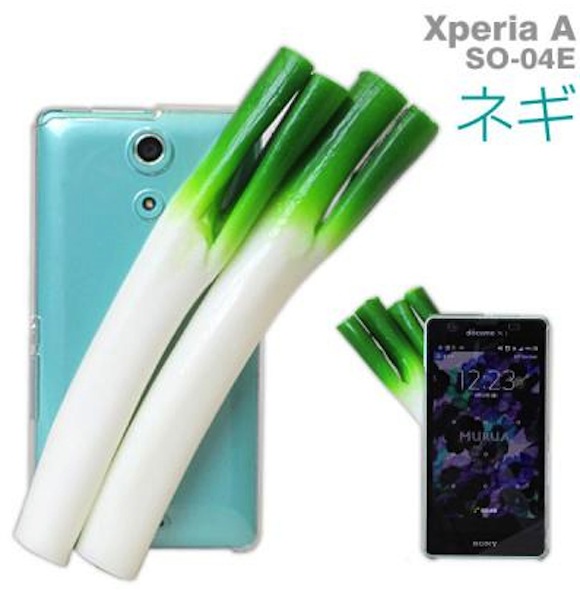
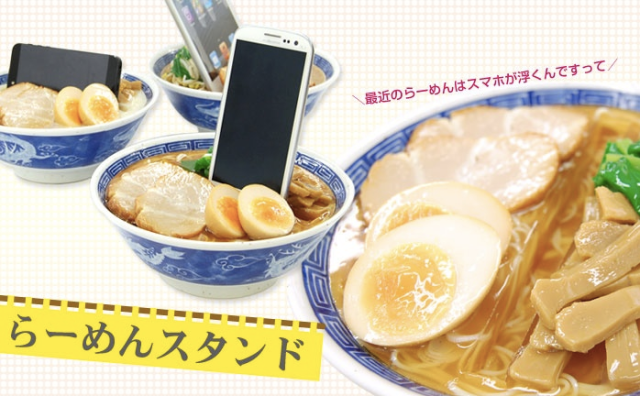
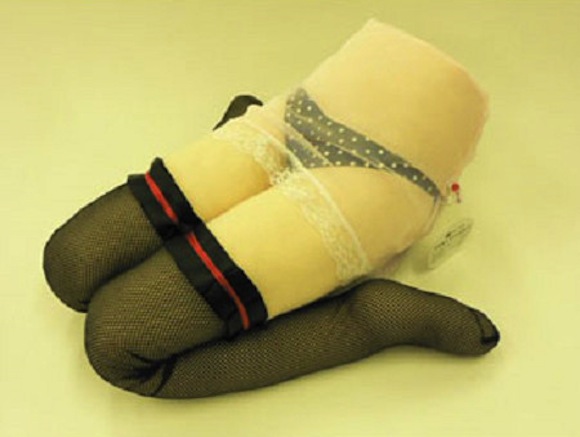







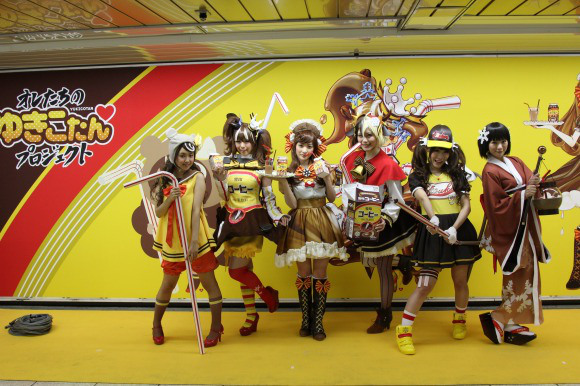

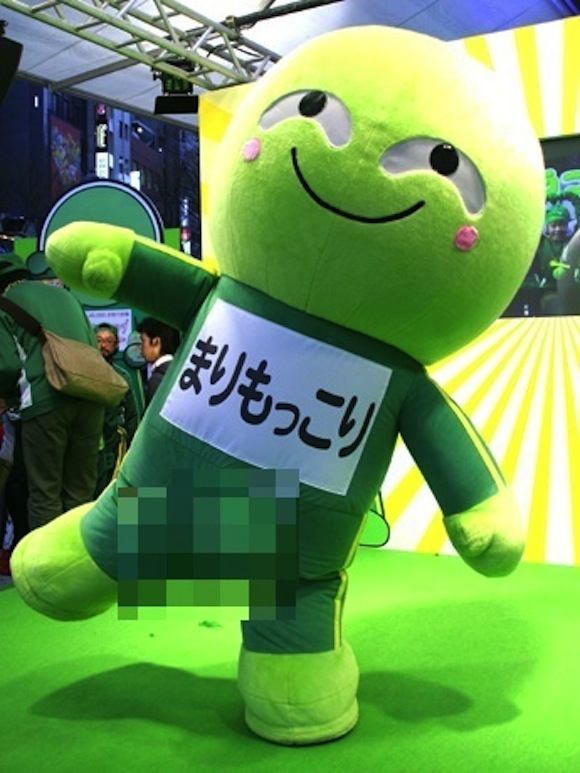
 Japanese communities giving their skylines a spring clean and saying goodbye to power lines
Japanese communities giving their skylines a spring clean and saying goodbye to power lines Starbucks Japan unveils new Holiday goods for 2024
Starbucks Japan unveils new Holiday goods for 2024 Nintendo’s controller capsule toys are so cool, even the machine you buy them from is awesome【Pics】
Nintendo’s controller capsule toys are so cool, even the machine you buy them from is awesome【Pics】 What’s it like in Shibuya on Halloween this year?
What’s it like in Shibuya on Halloween this year? Totoro stamp collection lets you add adorable Ghibli touches to cards and letters【Photos】
Totoro stamp collection lets you add adorable Ghibli touches to cards and letters【Photos】 New game on Nintendo Switch requires players to act drunk for superpowers
New game on Nintendo Switch requires players to act drunk for superpowers Japanese job-hunters reportedly dismayed by requests for “photos showing who you are as a person”
Japanese job-hunters reportedly dismayed by requests for “photos showing who you are as a person” Adorable Totoro embroidered bags return with anti-reselling protection in place【Photos】
Adorable Totoro embroidered bags return with anti-reselling protection in place【Photos】 American gun owner opens our eyes to a different way of life in Tokyo
American gun owner opens our eyes to a different way of life in Tokyo The new Ranma 1/2 anime is here! So is it worth watching?【SoraReview】
The new Ranma 1/2 anime is here! So is it worth watching?【SoraReview】 Tokyo Disneyland loses top-attendance crown for Japanese theme parks for second year in a row
Tokyo Disneyland loses top-attendance crown for Japanese theme parks for second year in a row Foreign man arrested for grabbing former AKB48 idol on Tokyo street, forcing her to ground
Foreign man arrested for grabbing former AKB48 idol on Tokyo street, forcing her to ground Starbucks Japan unveils new limited-edition Christmas menu at Reserve Roastery Tokyo
Starbucks Japan unveils new limited-edition Christmas menu at Reserve Roastery Tokyo Non-tourist trap fish market in northeastern Japan captures our hearts with amazing sashimi
Non-tourist trap fish market in northeastern Japan captures our hearts with amazing sashimi McDonald’s Japan debuts new anime girl mascot character with incredibly long name
McDonald’s Japan debuts new anime girl mascot character with incredibly long name Kyoto becomes City of Yokai, with Night Parade of One Hundred Demons festival this autumn
Kyoto becomes City of Yokai, with Night Parade of One Hundred Demons festival this autumn Japan’s newest life-size Gundam is finished, receives Shinto blessing in Osaka【Video】
Japan’s newest life-size Gundam is finished, receives Shinto blessing in Osaka【Video】 One of Japan’s most awesome rail passes, the Seishun 18 Ticket, just got a lot less awesome
One of Japan’s most awesome rail passes, the Seishun 18 Ticket, just got a lot less awesome Japanese convenience store Family Mart announces abolishment of eat-in spaces
Japanese convenience store Family Mart announces abolishment of eat-in spaces Studio Ghibli releases new insect whistle necklace from Nausicaä of the Valley of the Wind
Studio Ghibli releases new insect whistle necklace from Nausicaä of the Valley of the Wind Totoro sequel anime Mei and the Baby Catbus will screen at Ghibli Park this winter
Totoro sequel anime Mei and the Baby Catbus will screen at Ghibli Park this winter Starbucks Japan unveils Halloween Frappuccino for 2024, and it’s like drinking a magic spell
Starbucks Japan unveils Halloween Frappuccino for 2024, and it’s like drinking a magic spell Evangelion creator Hideaki Anno returning to anime with new project for 50-year-old franchise
Evangelion creator Hideaki Anno returning to anime with new project for 50-year-old franchise Studio Ghibli releases new Howl’s Moving Castle goods that capture the magic from the anime movie
Studio Ghibli releases new Howl’s Moving Castle goods that capture the magic from the anime movie Adult Jam Bread causes a stir at store in Tokyo
Adult Jam Bread causes a stir at store in Tokyo McDonald’s new Happy Meals offer up cute and practical Sanrio lifestyle goods
McDonald’s new Happy Meals offer up cute and practical Sanrio lifestyle goods Foreign tourists on Shinkansen bullet train break suitcase etiquette, angering local passengers
Foreign tourists on Shinkansen bullet train break suitcase etiquette, angering local passengers [Deleted] Article written for April Fool’s Day 2018
[Deleted] Article written for April Fool’s Day 2018 Japanese government to make first change to romanization spelling rules since the 1950s
Japanese government to make first change to romanization spelling rules since the 1950s Foreigner’s request for help in Tokyo makes us sad for the state of society
Foreigner’s request for help in Tokyo makes us sad for the state of society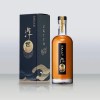 Ghibli founders Toshio Suzuki and Hayao Miyazaki contribute to Japanese whisky Totoro label design
Ghibli founders Toshio Suzuki and Hayao Miyazaki contribute to Japanese whisky Totoro label design Tokyo’s most famous Starbucks is closed
Tokyo’s most famous Starbucks is closed Princesses, fruits, and blacksmiths: Study reveals the 30 most unusual family names in Japan
Princesses, fruits, and blacksmiths: Study reveals the 30 most unusual family names in Japan Doraemon found buried at sea as scene from 1993 anime becomes real life【Photos】
Doraemon found buried at sea as scene from 1993 anime becomes real life【Photos】 New game on Nintendo Switch requires players to act drunk for superpowers
New game on Nintendo Switch requires players to act drunk for superpowers Japanese job-hunters reportedly dismayed by requests for “photos showing who you are as a person”
Japanese job-hunters reportedly dismayed by requests for “photos showing who you are as a person” Adorable Totoro embroidered bags return with anti-reselling protection in place【Photos】
Adorable Totoro embroidered bags return with anti-reselling protection in place【Photos】 American gun owner opens our eyes to a different way of life in Tokyo
American gun owner opens our eyes to a different way of life in Tokyo The new Ranma 1/2 anime is here! So is it worth watching?【SoraReview】
The new Ranma 1/2 anime is here! So is it worth watching?【SoraReview】 Japan super budget dining – What’s the best way to spend 1,000 yen at McDonald’s?
Japan super budget dining – What’s the best way to spend 1,000 yen at McDonald’s? We visit “Bonchi,” a super-size gourmet restaurant in Yamanashi Prefecture
We visit “Bonchi,” a super-size gourmet restaurant in Yamanashi Prefecture Foreigner accidentally allowed to vote in Japanese election, ballot will remain valid
Foreigner accidentally allowed to vote in Japanese election, ballot will remain valid Foreign man arrested for grabbing former AKB48 idol on Tokyo street, forcing her to ground
Foreign man arrested for grabbing former AKB48 idol on Tokyo street, forcing her to ground Animated video looks at 40 years of women’s fashions in Japan as Tokyo landmark gets set to close
Animated video looks at 40 years of women’s fashions in Japan as Tokyo landmark gets set to close Find a red envelope on the ground? Here’s why you should never pick it up
Find a red envelope on the ground? Here’s why you should never pick it up Beautiful Naked digital art event comes to Kyoto’s Nijo Castle after dark (contains no nudity)【Pics】
Beautiful Naked digital art event comes to Kyoto’s Nijo Castle after dark (contains no nudity)【Pics】 We try the Jack & Coke canned cocktail to see if it’s any better than mixing one yourself
We try the Jack & Coke canned cocktail to see if it’s any better than mixing one yourself